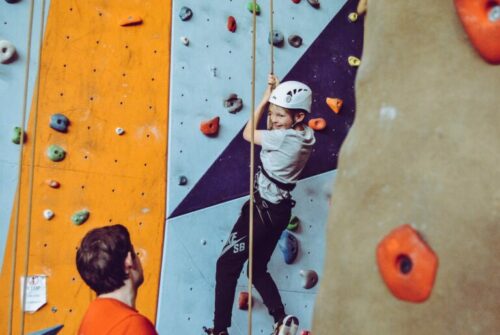Imagine stepping into a captivating world filled with intricate and fascinating creatures, each with its own unique beauty and allure. Enter The Natural History Museum, where the magnificent Insect Collection awaits your exploration. From delicate butterflies to mesmerizing beetles, this vast collection will transport you into the mesmerizing realm of the insect kingdom. Whether you’re a nature enthusiast or simply curious about these incredible creatures, the Insect Collection at The Natural History Museum will leave you awe-inspired by the diversity and wonder of the insect world.
Insect Collection at The Natural History Museum
The Insect Collection at The Natural History Museum is truly a remarkable sight to behold. With a vast array of specimens, this collection stands as a valuable resource for both scientists and the general public alike. From ancient fossils to intricate taxidermy, the insect collection showcases the remarkable diversity and beauty of the insect world.
Overview of the Insect Collection
The Insect Collection at The Natural History Museum is home to an astonishing number of specimens from all corners of the globe. It encompasses a wide range of insect orders, including beetles, butterflies, moths, ants, bees, and many more. The collection is meticulously organized and cataloged, providing a comprehensive record of the world’s insect species.
Importance of the Collection
The Insect Collection holds immense scientific importance. It serves as a repository for specimens that provide vital information for research on insect taxonomy, evolution, ecology, and behavior. The collection also plays a crucial role in the identification and discovery of new species, contributing to our understanding of global biodiversity. In addition, the collection serves as an educational tool, helping to inspire and engage visitors of all ages with the wonders of the insect world.
History and Evolution of the Collection
The history of the Insect Collection at The Natural History Museum dates back to its inception in the early 19th century. Over the years, the collection has grown exponentially through extensive fieldwork, exchanges with other institutions, and donations. It has evolved from a small assortment of specimens to become one of the largest and most comprehensive insect collections in the world. The collection continues to expand and adapt to keep up with new scientific advancements and collecting techniques.
Organizing and Maintaining the Collection
Methods of Collection
The specimens in the Insect Collection are obtained through various methods. Fieldwork plays a vital role, with scientists and collectors venturing to different habitats to gather samples. In addition, the museum receives donations from individuals, institutions, and research expeditions, contributing to the diversity of the collection. Efforts are made to ensure that specimens are collected ethically and sustainably, with a focus on conservation and preservation.
Specimen Preparation and Preservation
Proper preparation and preservation of insect specimens are of utmost importance to maintain the integrity and scientific value of the collection. Each specimen undergoes careful cleaning and preservation techniques to prevent decay and damage. In some cases, specimens are carefully mounted for display or stored in specially designed storage solutions to ensure their long-term preservation.
Database Management
Managing such a vast collection requires meticulous organization and documentation. The collection maintains a sophisticated database system that allows researchers and curators to access detailed information about each specimen. This includes species identification, collection location, collector details, and other important data. The database enables efficient specimen retrieval and assists in research and conservation efforts.
Exhibits and Displays
Public Exhibits
The Insect Collection is showcased to the public through a diverse range of exhibits. These exhibits provide a captivating experience that educates and entertains visitors of all ages. The displays are carefully curated to highlight different aspects of the insect world, such as insect behavior, pollination, and the importance of insects in ecosystems. Visitors can marvel at the stunning beauty and intricacy of preserved specimens or explore immersive displays that recreate natural habitats.
Interactive Displays
To enhance visitor engagement and understanding, the Insect Collection incorporates interactive displays. These displays allow visitors to have a hands-on experience, enabling them to learn about insect anatomy, life cycles, and ecological interactions. Through interactive touchscreens, visitors can access additional information, videos, and photographs, deepening their knowledge and appreciation of the insect world.
Virtual Exhibits
In addition to the physical exhibits, the Insect Collection has embraced the digital age by offering virtual exhibits. These online displays provide a convenient way for people around the world to explore and learn about insects. Virtual exhibits feature 3D models, high-resolution images, and interactive elements, allowing users to engage with the collection from the comfort of their own homes. This virtual accessibility promotes inclusivity and broadens the reach of the collection’s educational impact.
Research and Conservation
Scientific Research
The Insect Collection serves as a valuable resource for scientific research. Researchers from various disciplines utilize the collection for a wide range of studies, including taxonomy, evolution, behavior, ecology, and conservation. The extensive diversity of specimens and the detailed documentation associated with each specimen enable researchers to conduct in-depth investigations and make significant contributions to the field of entomology.
Species Discovery and Description
The Insect Collection has played a pivotal role in the discovery and description of numerous insect species. In certain cases, new species have been identified within the collection itself, leading to the revision of taxonomic classifications. Researchers meticulously compare specimens, dissect them, and analyze their morphology and DNA to identify distinct species and contribute to our understanding of the insect world’s complexity.
Conservation Efforts
The Insect Collection actively supports conservation efforts. By studying and understanding insect populations and their habitats, researchers can contribute to conservation planning and management strategies. The collection’s data provide valuable insights into insect population dynamics, distribution patterns, and responses to environmental change. This information is essential for designing effective conservation measures to protect these vital components of ecosystems.
Special Collections and Highlights
Rare and Endangered Species
The Insect Collection houses a remarkable assortment of rare and endangered species. These specimens offer a glimpse into the delicate balance of our ecosystems and the threats faced by various insect populations. By showcasing these species, the collection raises awareness about the importance of conservation and the need to protect these vulnerable organisms.
Historical and Cultural Significance
Several specimens in the collection hold historical and cultural significance. These specimens may have been collected by renowned scientists or explorers, offering insights into the history and development of entomology as a scientific discipline. Additionally, cultural artifacts associated with insects, such as traditional artwork or insect-related folklore, provide a fascinating glimpse into the cultural importance of insects in different societies.
Notable Insect Taxidermy
The Insect Collection displays exceptional examples of insect taxidermy. Skilled taxidermists have painstakingly preserved and mounted specimens to showcase their beauty and intricate details. These preserved insects, presented in lifelike poses, highlight the incredible diversity of insect forms and colors. These displays serve as a testament to the skill and artistry involved in the preservation of insects.
Educational Programs and Outreach
School Programs and Field Trips
The Insect Collection offers engaging educational programs for school groups, providing a unique learning experience. Through guided tours and hands-on activities, students can explore the world of insects and gain a deeper understanding of their importance in ecosystems. Field trips to natural habitats further enhance students’ appreciation for insects in their natural environment.
Public Workshops and Lectures
The Insect Collection hosts a range of public workshops and lectures to cater to individuals with an interest in entomology. These events cover various topics, including insect identification, butterfly gardening, and conservation strategies. Experts in the field provide informative talks and practical sessions, equipping participants with knowledge and skills to engage with insects in their own backyard.
Online Resources
To reach a broader audience, the Insect Collection provides online resources. These resources include educational videos, virtual tours, and downloadable materials. These resources serve as a valuable tool for students, teachers, and anyone interested in learning more about insects and the collection. By offering online accessibility, the collection promotes lifelong learning and encourages a deeper appreciation for the insect world.
Collaborations and Partnerships
Partnerships with Universities and Research Institutions
The Insect Collection collaborates with universities and research institutions. These partnerships facilitate the exchange of knowledge, expertise, and specimens. Researchers from partnering institutions can access the collection’s resources for their research projects, leading to collaborations and advancements in the field of entomology. These partnerships foster innovation and contribute to broader scientific understanding.
International Collaborations
The Insect Collection engages in international collaborations with museums and institutions around the world. These collaborations promote the sharing of research, collections, and expertise. Scientists and curators can collaborate on joint projects, contribute to global databases, and develop conservation strategies that have a global impact. Such collaborations enable the Insect Collection to become a hub for international knowledge exchange and cooperation.
Citizen Science Involvement
The Insect Collection actively involves citizen scientists in its initiatives. Citizen science projects invite members of the public to participate in data collection and research activities. By engaging the public, the collection can gather large amounts of data from diverse locations, greatly increasing the scope and impact of scientific research. Citizen science initiatives also foster a sense of stewardship and connection between individuals and the natural world.
Future Developments and Expansion
Digitization Initiatives
The Insect Collection is embracing digitization initiatives to enhance accessibility and facilitate research. The collection is in the process of digitizing its specimens, creating high-resolution images and 3D models that can be accessed online. This digital transformation allows researchers and the public to explore the collection remotely, maximizing the collection’s educational and scientific value.
Expansion Plans
To accommodate its growing collection, the Insect Collection has plans for expansion. New facilities and storage spaces will be constructed to ensure the proper preservation and accessibility of the specimens. The expanded space will also provide opportunities for the collection to continue its growth and acquisition of new and unique specimens that contribute to our understanding of the insect world.
Insect Collection Databases
The Insect Collection aims to establish comprehensive databases to store and organize its vast amount of data. These databases will serve as a central repository for specimen information, research data, and associated literature. Researchers, scientists, and the public will be able to access this wealth of knowledge, furthering our understanding of insects and their role in the natural world.
Visiting The Natural History Museum
Location and Access
The Natural History Museum is conveniently located in the heart of the city, easily accessible by public transportation. Visitors can enjoy a short walk from the nearest subway station or take advantage of the nearby parking facilities. The museum’s central location allows for easy inclusion in a day of exploring the city’s other attractions.
Admission and Opening Hours
The museum operates on a regular schedule, opening its doors to the public from morning until evening. Admission fees are affordable, and discounts are available for students, seniors, and families. The inclusive pricing ensures that everyone can have the opportunity to visit the Insect Collection and explore the wonders it offers.
Guided Tours and Facilities
Guided tours are available for visitors who want to delve deeper into the fascinating world of insects. Knowledgeable guides share their expertise and provide visitors with a unique behind-the-scenes perspective. The museum also offers convenient facilities, including restrooms, cafes, and gift shops, ensuring a comfortable and enjoyable visit for all.
Conclusion
The Insect Collection at The Natural History Museum stands as a testament to the remarkable diversity and importance of insects. Through careful curation, research, and educational initiatives, the collection allows visitors to appreciate the beauty and significance of insects in our world. It serves as a valuable resource for scientific research, conservation efforts, and public engagement. Whether you are a scientist, student, or simply curious about the wonders of the insect world, a visit to The Natural History Museum’s Insect Collection is an experience that will both educate and inspire.




